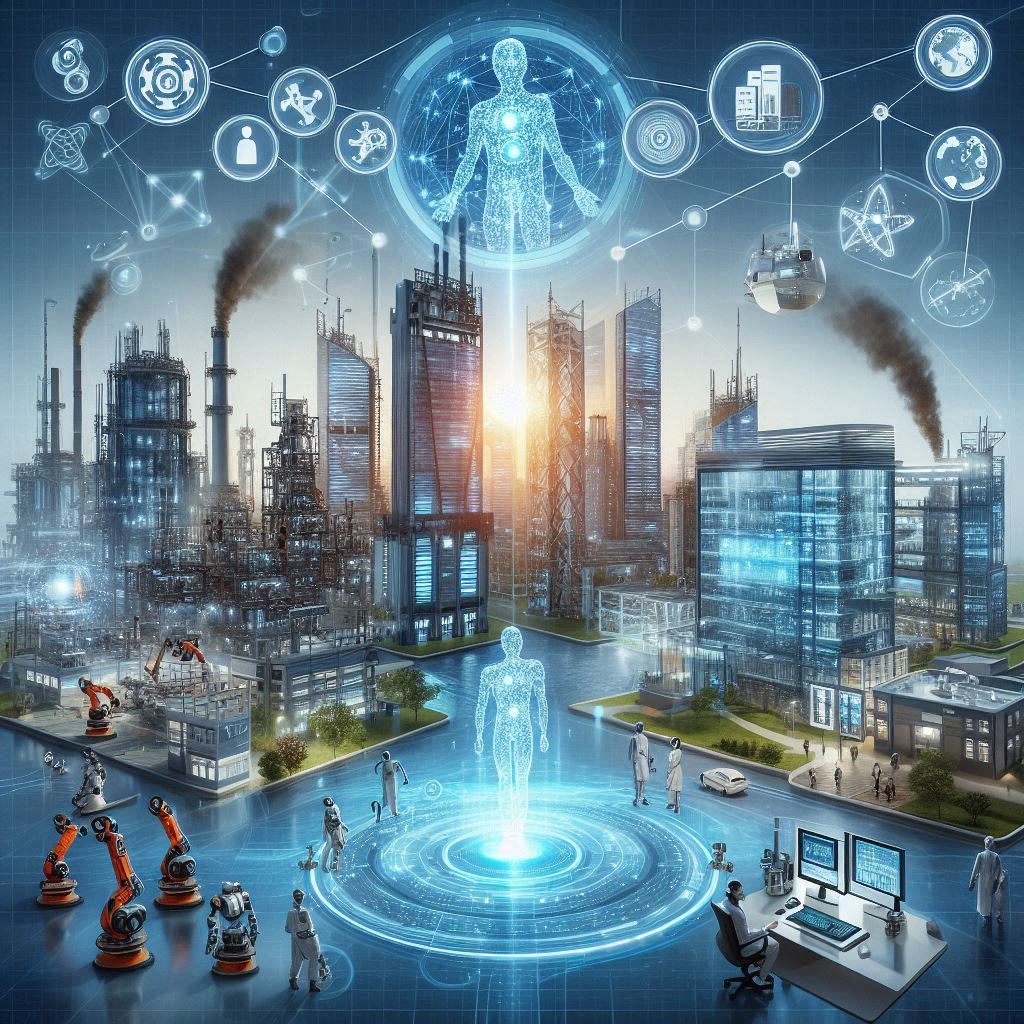Introduction to Digital Twins in Emerging Industries
While we talk about Digital Twins in Emerging Industries, we By offering a virtual counterpart of physical assets, like gadgets, systems, or processes, digital twins are transforming the operating scene in many different sectors. Before changes are put into effect in the real world, this technology enables companies to forecast results, maximise operations, and make educated judgements. Digital twins are progressively being embraced in developing industries as they improve efficiency, lower costs, and support product development.
Digital twins are used to replicate product designs, maximise manufacturing techniques, and forecast possible problems in industries like manufacturing and aerospace, therefore reducing downtime and improving general effectiveness. Digital twins enable the personalising of patient care in healthcare by simulating unique physiological traits, hence guiding more successful treatment plans. Furthermore employed in smart cities to maximise urban design, control traffic flow, and improve public services are digital twins, thus promoting more livable and sustainable surroundings. Digital twins are destined to become essential instruments for innovation and expansion across many developing industries as they keep changing.
Digital Twins in the Manufacturing Sector
By offering a virtual copy of actual processes and systems, digital twins are transforming the industrial industry. Without expensive physical equipment trials, this technology lets producers monitor, evaluate, plan, and maximise output.
Through real-time data analysis, predictive maintenance, and process optimization—all of which help to improve operational efficiency—Digital Twins in Emerging Industries can help more agile and sustainable product development results from their facilitation of iterative design exploration, cooperative design processes, and risk-mitigating activities as well. Digital twins provide a whole picture of manufacturing processes by combining them with technologies such as IoT, artificial intelligence, and virtual reality, thus enabling businesses to lower downtime, raise product quality, and make data-driven choices. Safer, quicker, more effective production techniques follow from this.
Digital Twins in Aerospace Uses
By acting as a virtual copy of aircraft systems, procedures, and infrastructure, digital twins in aerospace are revolutionising the sector These digital models maximise performance, forecast possible faults, and improve decision-making by means of real-time data. Digital twins permit virtual prototyping in aircraft design, therefore lowering the need for actual prototypes and hastening development. By forecasting when repairs are required, they also help to reduce downtime and lengthen component lifetime, thereby improving maintenance. By means of immersive simulations and assisting operational efficiency by providing real-time data for informed decision-making, digital twins also improve pilot training. Maximising fleet management and guaranteeing safety all throughout the aerospace industry depend on this technology.
Digital twins in energy
By generating virtual copies of real-world assets, systems, and processes, Digital Twins in Emerging Industries are revolutionising the energy industry Real-time monitoring, analysis, and optimisation made possible by this technology greatly raise operational performance and efficiency. Digital twins are used in the energy industry to replicate intricate situations, forecast possible breakdowns, and optimise energy distribution. Companies like Siemens and Shell, for example, use digital twins to monitor and control assets such gas turbines and refineries, therefore guaranteeing predictive maintenance and lower downtime.
By modelling real-time activities and demand changes, digital twins also significantly help improve power grid stability. This proactive strategy ensures a more robust grid through swift problem response and load distribution optimisation. Digital twins also support environmental sustainability by simulating the effects of energy generation, enabling businesses to lower waste and emissions. By offering data-driven insights and encouraging invention, digital twins are fundamentally changing energy operations overall.
Digital twins in Healthcare
Creating virtual duplicates of individuals, organs, and medical systems, digital twins are transforming healthcare. By letting clinicians replicate treatments and forecast results before real interventions, this technology improves patient care by ensuring operations are safer and more successful. By customising treatment regimens to specific patient features, medical history, and real-time physiological data—which increases treatment effectiveness and lowers adverse effects—digital twins also help to enable personalised medicine.
Apart from patient care, Digital Twins in Emerging Industries can maximise healthcare operations by means of process analysis and resource allocation, therefore enhancing efficiency and streamlining procedures. They provide medical practitioners with a realistic setting where they may safely practise difficult operations. Moreover, digital twins help remote patient monitoring by enabling quick interventions and thereby lowering the need for hospital visits. Digital twins are a transforming tool in contemporary healthcare as applications span clinical trials, medication development, and epidemic control.

Uses in Smart City Construction
Digital twins are helping the building sector more successfully plan and oversee projects. Creating digital copies of infrastructure or structures allows businesses to prevent any delays or quality problems, follow the development in real time, and more effectively collaborate amongst teams. This method also facilitates the best possible post-construction operating performance and building design. Applying this idea to smart cities, digital twins help to replicate metropolitan settings to maximise public services, traffic flow, and energy usage. A digital twin of a city’s transport system, for example, may assist in creating more effective paths and thereby ease traffic congestion.
Future Opportunity and Difficulties
Digital Twins in Emerging Industries provide potential as well as difficulties as they are merging into newly developing sectors. On the one hand, they provide until unheard-of insights and efficiency advantages that let companies innovate free from the high expenses related with conventional research and development. But especially when handling personal or sensitive data, they can generate ethical questions about privacy and data security. Widespread acceptance of digital twins depends on addressing these obstacles via strong consent systems and ethical frameworks. Looking forward, digital twins have great power to revolutionise sectors; as technology develops, we should anticipate even more creative uses in many different fields.
Conclusion
Finally, the transforming uses of digital twins in developing sectors are revolutionising corporate operations and creativity. Digital twins help businesses make data-driven choices, streamline operations, and forecast results before real-world changes are carried out by building virtual versions of actual objects. This technology has proven very important in industries such as manufacturing, aircraft, healthcare, and energy, where it increases efficiency, lowers costs, and advances product development.
Digital twins’ capacity to replicate complicated situations, forecast possible problems, and maximise operational performance drives their general acceptance. Digital twins, for example, provide personalised patient treatment in healthcare by simulating individual physiological traits, while in smart cities they maximise urban planning and resource allocation. Digital twins will become even more important in determining the direction of these new sectors as they develop. Adopting this technology would enable companies to unleash fresh degrees of creativity and competitiveness, therefore promoting sustainability and development in many different areas.




